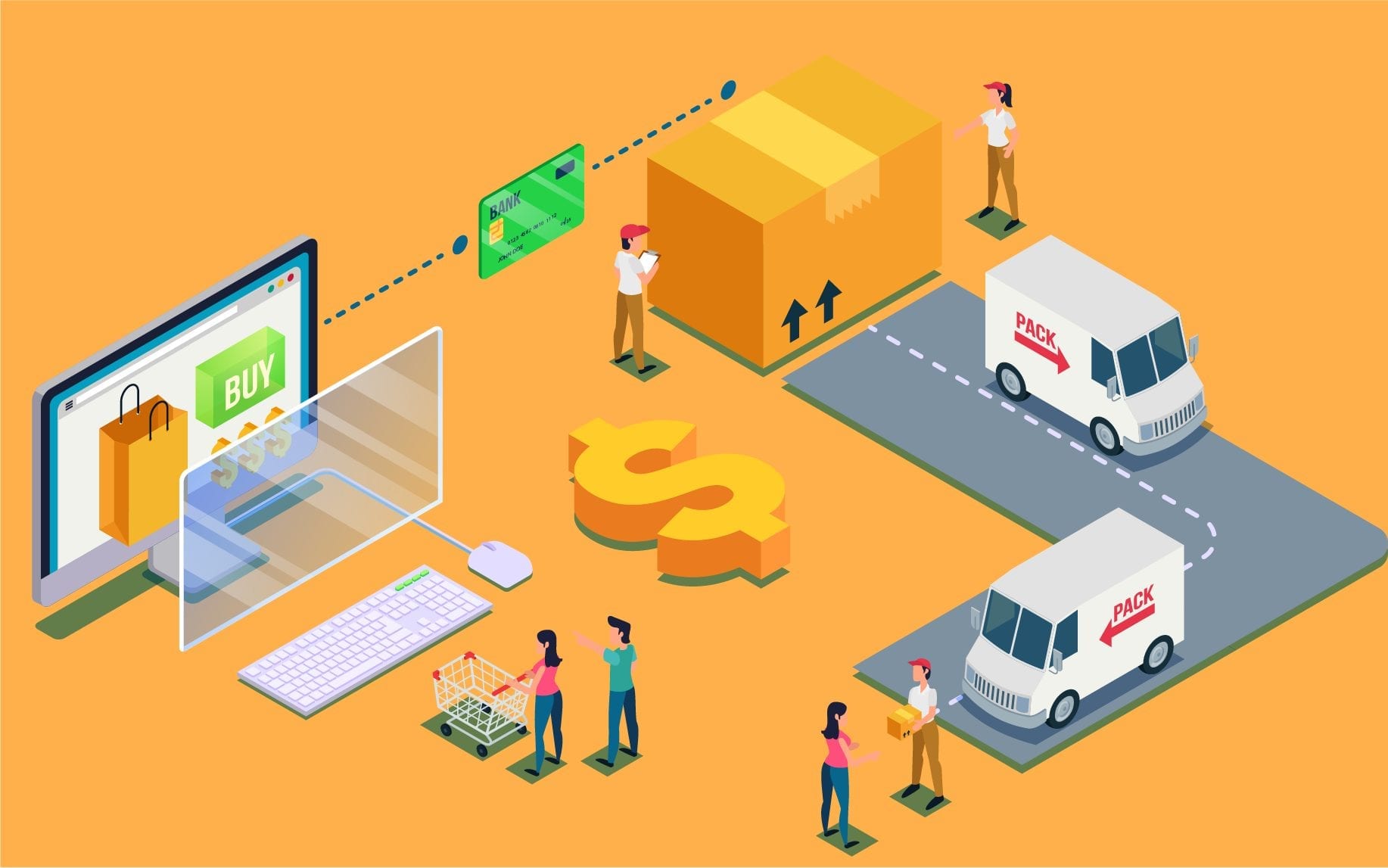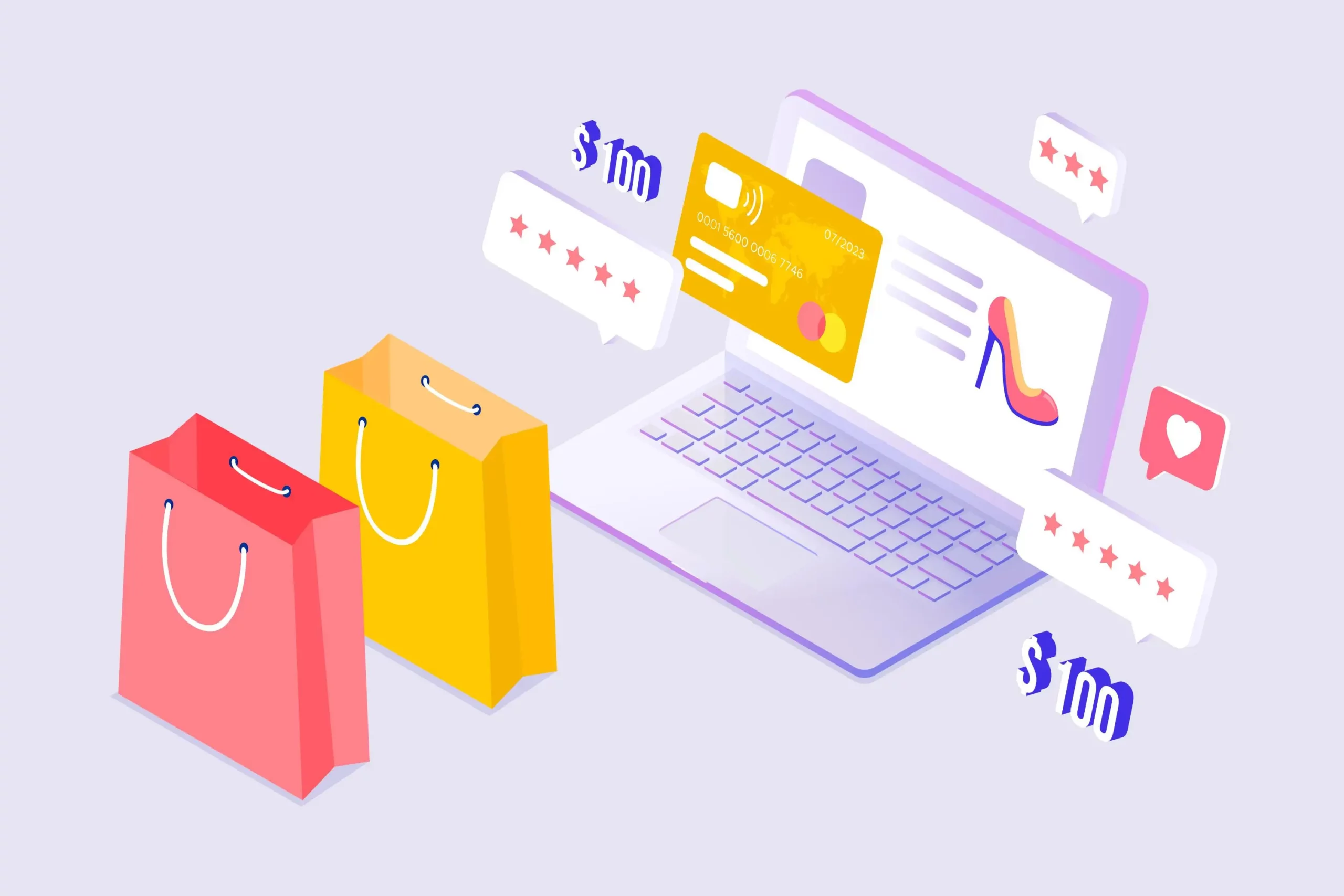E-commerce is a type of commerce in which the development of technology and the latest developments in the world bring us into our lives. E-commerce has changed our traditional way of shopping. Now, instead of going to buy the product we want, we want that product to come to us, and e-commerce can quickly fulfill the customer’s request.
Thanks to e-commerce sites, we can easily reach the product we want without getting tired. E-commerce is thus the most popular way of shopping for consumers.
What is E-Commerce?
E-commerce is the abbreviation of e-commerce. Every transaction done over the Internet has a broad meaning. E-commerce is a way of selling all kinds of goods and services.
E-commerce trade in retail and wholesale goods. So e-commerce companies supply and sell the product. Although this is a general definition, e-commerce is not just the sale of products. There are many different types of e-commerce.
What Are the Types of E-Commerce?
Types of e-commerce are studied using two basic distinctions. These two differences are:
• Who carries out the work?
• What product or service does the company offer?
The types of e-commerce are classified according to the answers to these two questions. The types of e-commerce are classified as B2C, B2B, C2, C2, B2G, and G2B.
The distinction is made according to the type of product or service a business offers, and the types of e-commerce are divided into those offering physical products, dropshipping, providing services, and providing digital products.
B2C (Business to Consumer)
B2C is the most common type of e-commerce. With this method of e-commerce, sell the products or services they sell directly to the consumer. The range of products and services sold is very wide. Everything can be sold in this type of e-commerce, from physical products to online services.
B2B (Business to Business)
B2B is another type of e-commerce. This type of e-commerce is also widely used. This type of enterprise provides goods or services to another enterprise. This model covers many, such as wholesalers, raw material manufacturers and service providers, who sell to.
C2C (Consumer to Consumer)
The type of consumer-to-consumer e-commerce has emerged with the rise of the understanding of e-business. In the C2C type, parties are not enterprises. Any non-party transaction falls into the C2C e-commerce type. For example, in second-hand sales, none of the parties are business.
C2B (Consumer to Business)
Consumer-to-business (C2B) is a business model that provides products or services. This type of e-commerce is a new business model. This type of e-commerce involves freelancers and other small service providers offering products and services to. For example, business purchases stock photos, videos or music created by individuals are C2B e-commerce.
B2G (Business to Government)
B2G is not just consumers who sell services or buy goods. The state is also the party that buys services or goods. One of the types of e-commerce where the state is a party to these transactions is the “from business to state” model. For example, in many sectors, such as cybersecurity, waste management and urban planning, the state-to-business model can be used.
G2B (Government to Business)
G2B provides goods or services to government enterprises, which is the opposite of the government-to-business model. This type of e-commerce is more used to sell information that can buy, such as project drafts or legal files.
So far, we’ve explained the types of e-commerce activities by focusing on these aspects. Now let’s make a distinction between the products or services sold in e-commerce activities. The importance of this distinction allows us to understand what the seller is doing, and what kind of products or services he is selling.

Physical Products
The most popular products sold are physical products. These online stores sell everything from clothes to books, to market items, to home products. Businesses selling physical products start by setting up an e-commerce site that they own. Or they start selling their products on an e-commerce platform.
The most important problem in the sale of physical products is logistics. Therefore, different models have emerged to simplify this process. One of them is dropshipping.
Dropshipping
In this model, also known as stockless e-commerce, companies use external services to produce orders. Vendors using the dropshipping model do not deal with processes such as production logistics, storage or shipping. Sellers who take advantage of this model only market their products and try to find customers.
Services Many services are offered digitally, from freelance services to film releases. Those who offer these services either use a site of their own or offer them on special platforms that offer the service.
Digital Products
One of the most popular products of recent times is digital products. Software and digital products such as music files are included in this coverage. It is preferred by sellers because it can be easily presented to the customer. Because the customer is only downloading to buy these products. Storage is also more advantageous because it has no logistics costs.
The Advantages and Disadvantages of E-Commerce
Advantages
• Low operating costs.
• Activity continues 24/7.
• More audience can be reached.
• Provides speed and ease for customers.
• E-commerce business is easy to grow.
Disadvantages
• No face-to-face interaction with customers.
• Customers can only try the products when they reach their hands.
• The competition is intense.
If you want to embark on an e-commerce journey and leave it to someone who knows more about it, you can take advantage of WeaSocial’s reliable and professional e-business consulting service.
